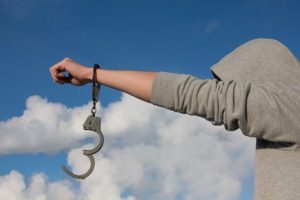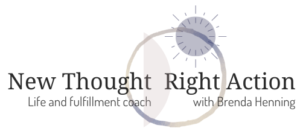You can recover from stressful, traumatic life events. And you can recover in such a way that your life has more meaning and purpose than before the event occurred.
 The most important piece of the recovery process is to address your emotions about the event. As humans, we are designed to have emotions. We can try to avoid or repress our emotions, but we are supposed to have them. Post-traumatic stress is a normal reaction to abnormal circumstances. We can also experience secondary stress when we witness harm to people we care about. Because of our emotional connection with others, the greater is the degree of a stress response when something we perceive as harmful occurs to this other human.
The most important piece of the recovery process is to address your emotions about the event. As humans, we are designed to have emotions. We can try to avoid or repress our emotions, but we are supposed to have them. Post-traumatic stress is a normal reaction to abnormal circumstances. We can also experience secondary stress when we witness harm to people we care about. Because of our emotional connection with others, the greater is the degree of a stress response when something we perceive as harmful occurs to this other human.
This emotional bias is one of the rationales for discouraging physicians and other healthcare professionals from treating their own family members. It is difficult for them to set aside their feelings in treating a family member. They become too scared to make sound decisions.
On the flip side, though, is the more connected you are to a variety of people the easier it may be to recover from a stressful experience. That’s why it “takes a village” to participate as full functioning humans in life. In Johann Hari’s Ted Talk he discusses how his research on connection showed him “surprising and hopeful ways” of thinking about problems, which can drive us to isolation.
You can recover from stressful, traumatic life events. And you can recover in such a way that your life has more meaning and purpose than before the event occurred.
The most important piece of the recovery process is to address your emotions about the event. As humans, we are designed to have emotions. We can try to avoid or repress our emotions, but we are supposed to have them. Post-traumatic stress is a normal reaction to abnormal circumstances. We can also experience secondary stress when we witness harm to people we care about. Because of our emotional connection with others, the greater is the degree of a stress response when something we perceive as harmful occurs to this other human.
This emotional bias is one of the rationales for discouraging physicians and other healthcare professionals from treating their own family members. It is difficult for them to set aside their feelings in treating a family member. They become too scared to make sound decisions.
On the flip side, though, is the more connected you are to a variety of people the easier it may be to recover from a stressful experience. That’s why it “takes a village” to participate as full functioning humans in life. In Johann Hari’s Ted Talk he discusses how his research on connection showed him “surprising and hopeful ways” of thinking about problems, which can drive us to isolation.
Building Community to recover from traumatic life events
When I learned about my son’s autism, I lived in a remote New Mexico town. This community was only in the beginning stages of developing special education programs in the public school tailored to meet the unique needs of kids on the spectrum. They hired outside consultants from Houston to help them develop their programs. So, while the school system tried to offer something, it was limited.
During this period, I reached out to as many people as I could think of who might be able to help me. I called professionals in larger cities and their distance was an obstacle to accessing them. Also, the professionals—for whatever reason—denied me help. They refused to take an appointment from me. Perhaps, they were swamped with more local people.
But I didn’t give up. So, I started Google searches, reached out to groups on Facebook, and asked my friends for people they knew. So, the people who helped me the most were other mothers whose own children were on the spectrum or had other special needs. None of them lived in the town where I lived. They lived in other parts of the country. Yet, they were willing to help me by sending me information through the mail or writing about their personal experiences. A dance instructor sent me a packet of body movement exercises designed for sensory integration disorders.
So, every morning, before I dropped my son off at the local early education center, I took him to the park and coached him in these exercises so he would be better prepared to go to the early education center.
Look beyond your back yard
If I had limited my search to my back yard, I would have experienced loneliness and isolation. I reached out through any means I could think of to connect with people who had navigated the path longer than me. I actively sought out people’s writings which gave me hope. One of the best blogs I came across and read almost daily in the beginning—both for the quality of the mother’s writing and for her experience—was Autism Sparkles. Her writing about her experiences gave hope to an unknown, anonymous mother living in New Mexico.
Somehow, I intuitively knew the critical importance of reaching out to people with a positive mindset. They found a way to recover from a traumatic life event and transformed it into post traumatic growth.
The Seven Signs of Post-Traumatic Growth
- You will have an appreciation for life.
- You will re-order your priorities.
- Your relationships to others will change.
- You will have a bigger interest in authentic, vulnerable experiences with others.
- You will begin to see new possibilities in life, as a result of this stressful experience.
- You will acknowledge your personal strength or resilience.
- You will experience a spiritual change.
Read more about growth after trauma here.
How will you know you are finding your way to a transformational experience? If you are having trouble finding your way, I hope you’ll reach out.
Love and light,
Brenda Henning
